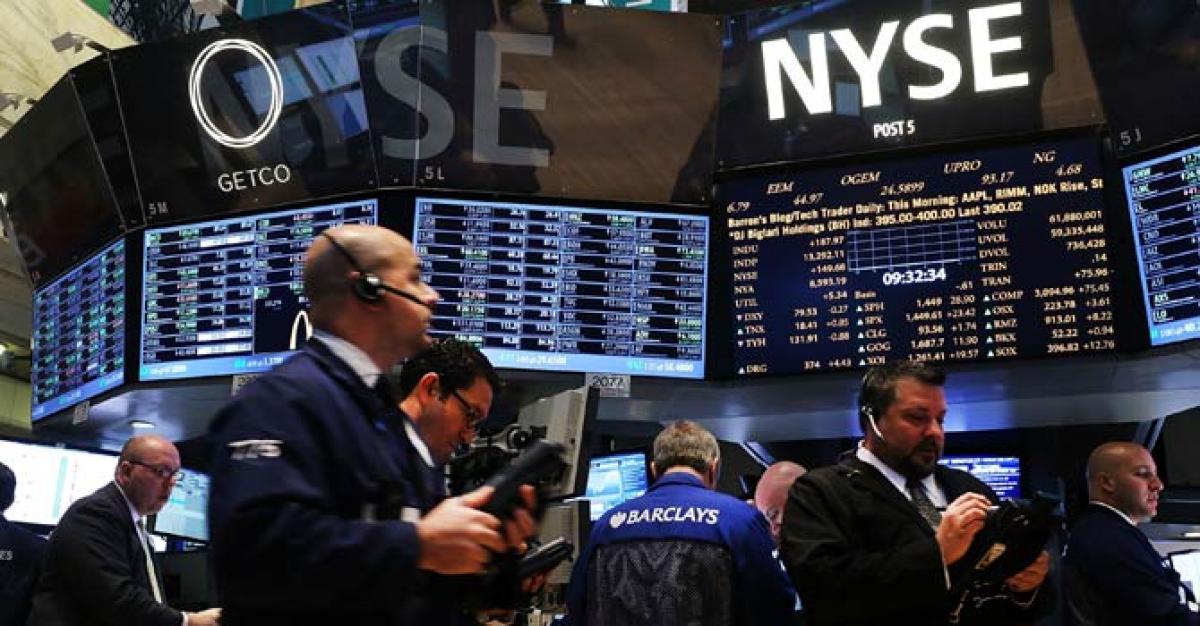Live
- Cambodia's parliament to approve new Foreign Minister
- Streamlining Disorganized Payment Systems: Thejas Prasad’s Expertise Centralizes Payment Processes into a Unified Oracle Cloud Solution
- J&K Police arrests three drug peddlers in Srinagar
- Godhra victims still waiting for justice: Digvijaya Singh
- Sick industrial units: Bengal govt streamlines monitoring of recovery of loans
- ADB, Tuvalu sign 16.53 million USD grant to improve water, sanitation
- Jharkhand polls: Issues of 'Roti, Beti, Maati' & tribal identity dominated campaign rhetoric
- Kharge seeks President’s intervention to restore normalcy in Manipur
- India aims for equity and balance when negotiating FTAs: Piyush Goyal
- PKL Season 11: ‘Small mistakes in strategy’ led to one-point heartbreak, says Bengaluru Bulls head coach
Just In

The rally was primarily underpinned by signs of a pickup in momentum in the global economy, led by China.
Asian shares started the week modestly higher on Monday after a bumper quarter as investors look to the shape of U.S. trade and economic policies and how they could affect global growth.
MSCI's broadest index of Asia-Pacific shares outside Japan rose 0.3 percent, while Japan's Nikkei gained 0.4 percent after hitting a seven-week low on Friday.
Ex-Japan Asia MSCI had gained 12.3 percent in the last quarter, its biggest quarterly gain in 6-1/2 years and almost double the 6.4 percent rise in MSCI's broadest gauge of the world's stock markets covering 46 markets.
The rally was primarily underpinned by signs of a pickup in momentum in the global economy, led by China.
South Korea's trade data for March released over the weekend added to the evidence of improving global demand, with exports rising more than expected.
While a private survey on China's manufacturing on Saturday came in below market expectations it still showed a healthy expansion after a similar survey by the government on Friday pointed to strong growth in the sector.
"The Chinese economy is likely to stay firm at least until the Communist party congress (later this year). The hi-tech sector is doing well, supporting Korean and Taiwanese shares," said Yukino Yamada, senior strategist at Daiwa Securities.
In Japan, the Bank of Japan's tankan survey showed that business sentiment improved, albeit slightly less than expected.
The main focus for markets this week centres on U.S. payroll figures on Friday and U.S. President Donald Trump's first meeting with counterpart Xi Jinping on Thursday and Friday.
"If we get strong reading in U.S payrolls data, the markets will try to price in a rate hike in June," said Minori Uchida, chief currency strategist at the Bank of Tokyo-Mitsubishi UFJ.
Markets are currently pricing in around a 58 percent chance of another rate rise in June, which would mark the second of three hikes expected this year.
On the other hand, investors are on guard for the possibility the U.S. administration may adopt protectionist measures.
In a tweet on Thursday, Trump said he expected the meeting with Xi "will be a very difficult one."
On Friday, Donald Trump sought to push his crusade for fair trade and more manufacturing jobs back to the top of his agenda by ordering a study into the causes of U.S. trade deficits and a clampdown on import duty evasion.
And on Sunday, Trump held out the possibility of using trade as a lever to secure Chinese cooperation against North Korea.
The executive orders came a week after Trump's promise to replace Obamacare imploded in Congress, adding to concerns he may struggle to pass highly-anticipated tax cuts and infrastructure spending bills.
"After his failure to push through his healthcare reforms, investors increasingly think that his tax reforms will take time. And given the China-U.S. summit, trade issues could come to the fore this week," said Masahiro Ichikawa, senior strategist at Mitsui Sumitomo Asset Management.
Any hints that Washington may name some of its trade partners such as China, Japan and Germany, as currency manipulators could dent the dollar. The U.S. Treasury will release its next currency report on April 15.
"The Trump administration is not necessarily seeking to reduce the trade deficit through a cheaper dollar. But it has strong intentions to do that and it could use a weaker dollar as a bargaining tool in trade negotiation," said Uchida of the Bank of Tokyo-Mitsubishi UFJ.
The dollar was slightly softer at 111.33 yen, but kept some distance from its four-month low of 110.11 touched a week ago.
The euro ticked up 0.2 percent to $1.0673, rebounding from Friday's two-week low of $1.0651 hit after data had shown inflation in the currency bloc had slowed by far more than expected in March.
Oil prices stood near three-week highs on a growing sense that OPEC and nonmember Russia would extend their production cut, seeking to drive the market higher, though high U.S. rig count capped their advance.
Brent crude futures hit a three-week high of $53.63 per barrel early on Monday and last stood at $53.43, down 0.2 percent from U.S. close.
U.S. West Texas Intermediate crude futures was little changed at $50.56 a barrel.

© 2024 Hyderabad Media House Limited/The Hans India. All rights reserved. Powered by hocalwire.com







